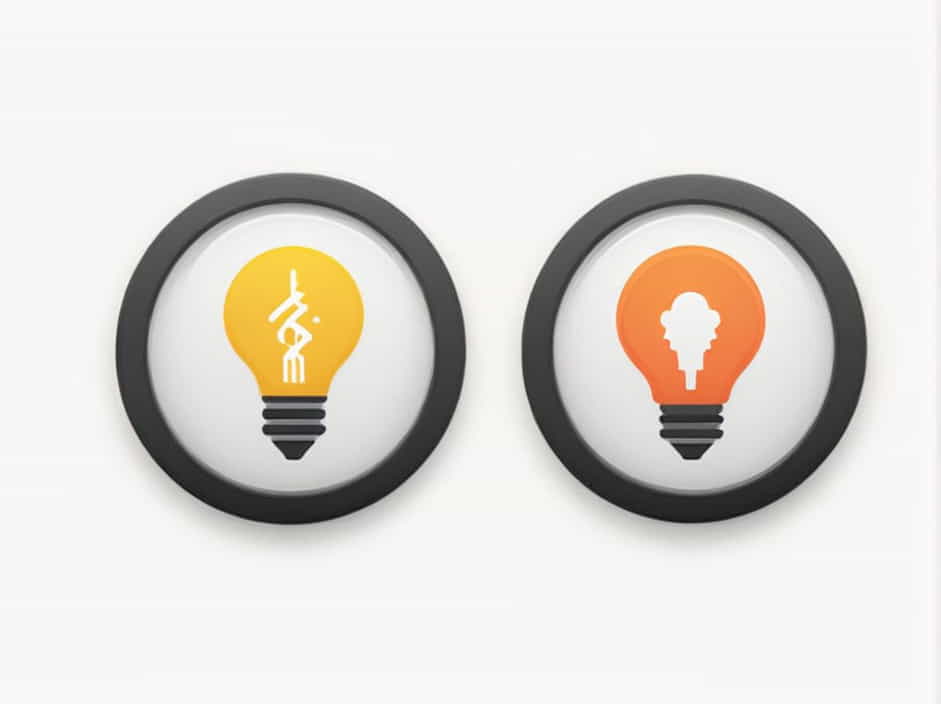Brainstorming is a powerful creative thinking technique used to generate new ideas, solve problems, and encourage innovation. It is widely used in business, education, and creative industries to unlock new possibilities.
Effective brainstorming consists of two key phases: the idea generation phase and the idea evaluation phase. Understanding these phases helps individuals and teams brainstorm efficiently, leading to better solutions and more innovative thinking.
Phase 1: Idea Generation
The first phase of brainstorming focuses on generating as many ideas as possible without judgment or criticism. This phase is also known as divergent thinking, where creativity flows freely.
Key Principles of the Idea Generation Phase
-
Quantity Over Quality
- The goal is to produce as many ideas as possible, regardless of how practical or realistic they seem.
- More ideas mean a higher chance of finding unique and valuable solutions.
-
No Criticism or Judgment
- Participants should feel free to express any idea without fear of rejection.
- Judgment can limit creativity and discourage participants from sharing innovative thoughts.
-
Encourage Wild Ideas
- Some of the most innovative solutions come from unconventional or even crazy-sounding ideas.
- Participants should be encouraged to think outside the box.
-
Build on Each Other’s Ideas
- Collaboration leads to better results.
- One person’s idea might inspire another participant to expand or improve it.
Techniques for Effective Idea Generation
-
Mind Mapping
- A visual tool where a central concept is connected to multiple ideas, forming a web of possibilities.
- Helps participants see relationships between different thoughts.
-
Brainwriting
- Instead of speaking, participants write down their ideas and pass them around.
- Reduces pressure and ensures everyone contributes.
-
Rapid Ideation
- Participants set a time limit and list as many ideas as they can within that timeframe.
- Forces quick thinking and prevents overanalyzing.
-
SCAMPER Technique
- A structured brainstorming method that asks questions like:
- Substitute: What can be replaced?
- Combine: Can ideas be merged?
- Adapt: How can we modify existing solutions?
- Modify: What changes can improve it?
- Put to another use: Can it be used differently?
- Eliminate: What is unnecessary?
- Reverse: What happens if we flip the approach?
- A structured brainstorming method that asks questions like:
Phase 2: Idea Evaluation
Once a list of ideas has been created, the next step is evaluating and selecting the best ones. This phase is also known as convergent thinking, where the focus shifts from creativity to practicality.
Key Principles of the Idea Evaluation Phase
-
Assess Feasibility
- Ideas should be analyzed based on practicality, cost, time, and resources.
- Some ideas might be too ambitious or impossible to execute.
-
Refine and Improve Ideas
- Some ideas may need modification or combination to make them more viable.
- Teams should discuss ways to enhance and refine promising concepts.
-
Use a Structured Approach
- Rather than dismissing ideas randomly, teams should use structured evaluation methods to rank or score ideas based on specific criteria.
Techniques for Effective Idea Evaluation
-
The Six Thinking Hats Method
- A problem-solving approach where participants view ideas from six different perspectives:
- White Hat (Facts & Data): What are the facts?
- Red Hat (Emotions): How do we feel about the idea?
- Black Hat (Risks): What could go wrong?
- Yellow Hat (Benefits): What are the advantages?
- Green Hat (Creativity): How can we improve it?
- Blue Hat (Process Control): How do we organize the next steps?
- A problem-solving approach where participants view ideas from six different perspectives:
-
Weighted Scoring Matrix
- Assigns numerical values to different factors such as feasibility, cost, impact, and originality.
- Helps teams objectively compare and prioritize ideas.
-
Dot Voting
- Each participant is given a set number of votes (dots) to place on their preferred ideas.
- The most popular ideas move forward for further development.
-
Pros and Cons List
- A simple yet effective technique where teams list the advantages and disadvantages of each idea.
- Helps identify potential challenges and benefits.
Common Mistakes in Brainstorming and How to Avoid Them
1. Judging Ideas Too Early
Mistake: Criticizing ideas in the idea generation phase can kill creativity.
Solution: Keep the first phase judgment-free and save evaluations for the second phase.
2. Dominance of Certain Participants
Mistake: Some people may overshadow others, preventing equal participation.
Solution: Use structured methods like brainwriting or round-robin brainstorming to give everyone a chance.
3. Lack of Structure
Mistake: Without a clear process, brainstorming sessions can become chaotic and unproductive.
Solution: Follow the two-phase approach and use specific brainstorming techniques to stay on track.
4. Not Taking Action on Ideas
Mistake: Many brainstorming sessions produce great ideas but fail to implement them.
Solution: After selecting the best ideas, assign clear action steps and responsibilities.
Brainstorming is most effective when it follows a structured two-phase process:
- Idea Generation Phase – Focuses on creativity, free-thinking, and generating a large number of ideas.
- Idea Evaluation Phase – Focuses on analyzing, refining, and selecting the most feasible and impactful ideas.
By understanding and applying these two phases, teams can maximize creativity, improve decision-making, and achieve better results in problem-solving and innovation.
